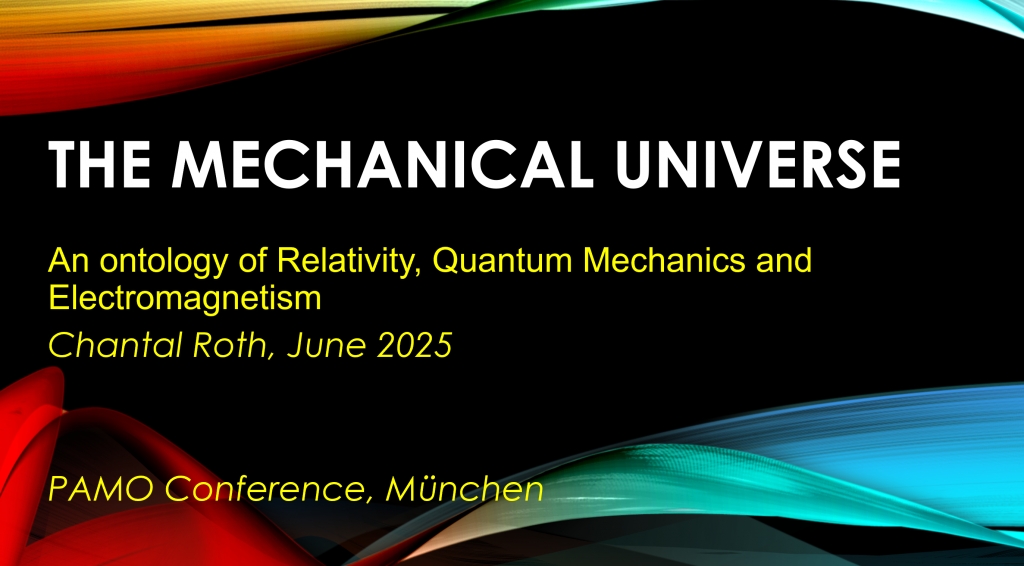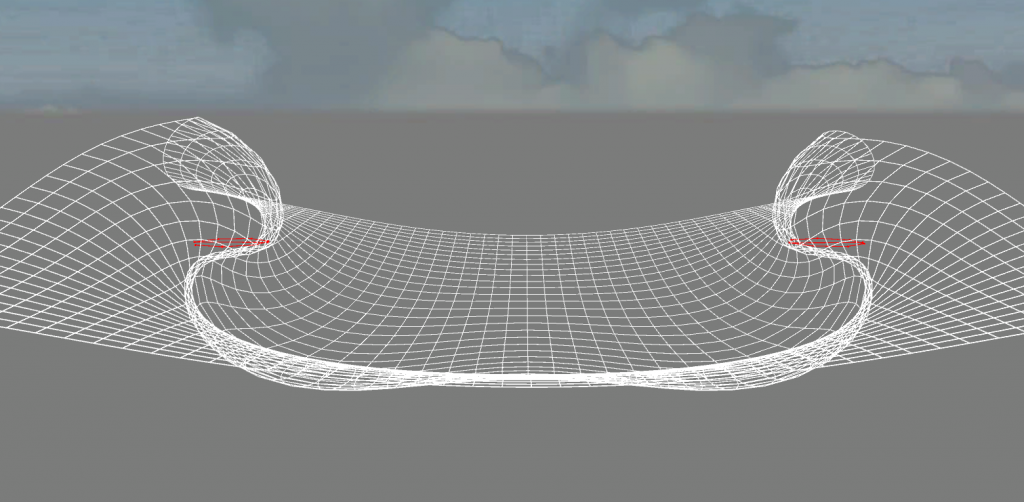Connecting quantum physics to reality
The Mechanical Unviverse: An ontology of Relativity, Quantum Mechanics and ElectromagnetismThe Mechanical Universe: An ontology of Relativity, Quantum Mechanics and Electromagnetism
PAMO Conference · Jun 15, 2025
What if the universe is not empty space, but a vibrating elastic solid?
In this talk, I revisit key physics phenomena, from quantum spin and the photoelectric effect to gravity and special relativity, and reinterpret them using a unified mechanical model of the universe. Instead of relying on abstract fields or particles, this framework models everything as real waves in an elastic medium, where light, matter, and charge emerge from wave modes, topological defects, and resonance.

Using simulations and classical field theory (inspired by Maxwell, Kelvin, and recent work by Close and Rashkovskiy), I show how familiar “quantum” outcomes like spin-½ and Stern-Gerlach splitting can arise from deterministic wave evolution. I also explore the idea that gravity is a form of refraction and that space contraction and time dilation are natural wave effects.
This ontological approach offers intuitive explanations, and may help bridge the gap between quantum theory and general relativity
Quaternion Quantum Mechanics
Foundations of the Quaternion Quantum Mechanics by Marek Danielewski
https://www.mdpi.com/1099-4300/22/12/1424#
and
Quaternion quantum mechanics has well-founded mathematical roots and can be derived from the model of the elastic continuum by French mathematician Augustin Cauchy, i.e., it can be regarded as representing the physical reality of elastic continuum.
In this model, both the Schrödinger equation and also the Dirac equation have a real physical meaning, that is quantum physics has an underlying reality and a wave function is not just a probability density, but consists of actual deformations in an elastic solid – our universe. This elastic solid can be thought of as the “fabric of space”.
This page attempts to explain some of its concepts and provides simulations to help understand what spin 1/2 means.
Spinor simulation with Unity 3D

Imagine space as a 3D grid. A particle in this universe is essentially localized wave energy, so a volume of space that contains dislocations (compression and twist) in this volume. The simulation shows a 1/2 spinor, how it takes 720 degrees of (apparent) rotation to rotate a wave around back to where it was – without disrupting the grid at any point.
It is a Unity 3D simulation, based on the idea of SpinLab . You can download the executable and source code upon request.

More visualizations can be found here .
The images below show two spin 1/2 particles, such as two electrons. Note that one is spin up and the other is spin down. They cannot both have the same spin (I will add an image soon to show this), which leads to the Pauli Exclusion principle, upon which our entire material world is built upon. The image on the right includes two apparently rotating spheres – note that this is for visual aide only, and they have no physical meaning. The spheres help to see the apparent rotation, and that it takes 720 degrees to return back to the starting point.
The simulation allows you to change speed, angles and other parameters, and let’s you “fly” through the scene to get a better look and understanding of how this works.


The “spheres” are visual aide only, to show the center of the “particles”.
More visualizations can be found here .
Links and References
Simulations:
All QM related simulations: https://jsfiddle.net/u/Chenopdodium/collection/quantum-mechanics/
Spin 1/2 simulations: https://jsfiddle.net/u/Chenopdodium/collection/spin-1-2/
Charge simulations: https://jsfiddle.net/u/Chenopdodium/collection/charge/
GR simulations: https://jsfiddle.net/u/Chenopdodium/collection/general-relativity/
SR simulations: https://jsfiddle.net/u/Chenopdodium/collection/special-relativity/
EM wave simulations: https://jsfiddle.net/u/Chenopdodium/collection/em-waves/
Other
Interactive videos to understand quaternions: https://eater.net/quaternions
Foundations of the Quaternion Quantum Mechanics (publication): https://www.mdpi.com/1099-4300/22/12/… https://www.researchgate.net/profile/…
Slides for “Foundations of Quantum Mechanics and Gravity”: https://www.dropbox.com/s/j3de24nnvjc…
M. Danielewski, “The Planck-Kleinert Crystal”, Z. Naturforsch. 62a, 564-568 (2007).
H. Kleinert & J. Zaanen, „Nematic world crystal model of gravity explaining absence of torsion in spacetime”, Physics Letters A 324 (2004) 361–365.
http://www.classicalmatter.org/IntroW…
https://www.wired.com/story/meet-the-…
QM Seminar: http://th.if.uj.edu.pl/~dudaj/QMFNoT
https://en.wikipedia.org/wiki/Gimbal_….
https://demonstrations.wolfram.com/Ro…
http://www.askingwhy.org/blog/ (a summary of some of my questions and links)
Slides for the 2021 talk
Talk from 2021: https://youtu.be/QXDUItMVE4U
Discussion with Lori Gardi: https://www.youtube.com/live/6You9S9wu8A
Chantal Roth